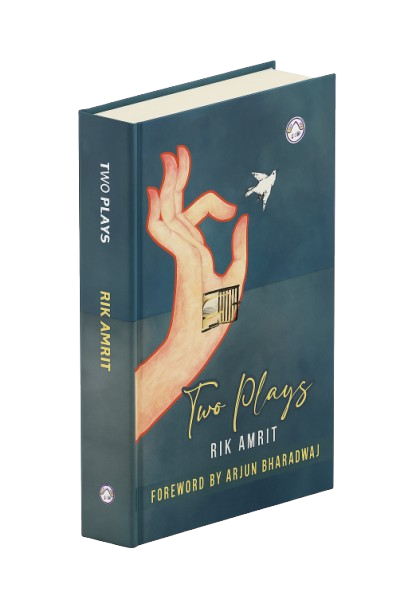Two Plays by Rik Amrit with a Foreword by Arjun Bharadwaj(2025)
Cover: Senjuti Bondyopadhyay, Publisher: Dhvani Publication
In "TWO PLAYS," Rik Amrit demonstrates his masterful ability to transform profound narratives into captivating theatrical experiences. Drawing from his deep knowledge of classical literature and practical theatre experience, Rik reimagines timeless stories with fresh perspective and dramatic power.
The first play, based on a Buddhist jātaka tale, follows a golden peacock that becomes a powerful metaphor for the disconnect between rituals and their forgotten origins. Through beautiful language and thoughtful characterization, Rik invites audiences to question blind belief and embrace contemplative understanding of deeper truths.
The second play revisits the epic character Aśvatthāmā from the Mahābhārata, exploring how darkness can persist even when surrounded by light. This powerful drama examines how some souls remain unchanged even at life's critical moments, misinterpreting noble intentions and suffering the consequences of deep-seated animosity.
Together, these plays showcase Rik's exceptional talent for balancing traditional storytelling with contemporary theatrical sensibilities. Whether offering serene contemplation or stark awakening, "TWO PLAYS" promises a singular entertainment experience that, as Kālidāsa observed centuries ago, satisfies audiences of all tastes.
Get the Book
Explore All Books










